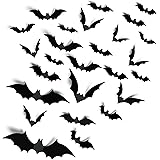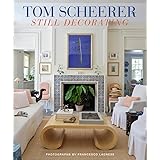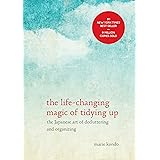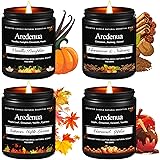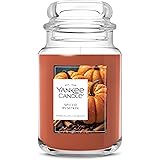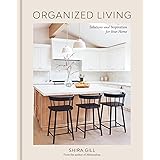Many homeowners often wonder how to elevate their living spaces. A common issue is a desire for a home that feels both current and uniquely personal. Fortunately, the upcoming 2025 interior design trends offer compelling solutions for reinvention. The video above introduces some key directions. This article will further detail these exciting home decor trends, helping you transform your surroundings into a reflection of contemporary style and comfort.
Embracing Japandi: A Cozy Approach to Minimalism
Minimalism has long been a dominant aesthetic. However, 2025 brings a warmer interpretation to the forefront. This is achieved through the integration of Japandi style. Japandi blends Japanese minimalism with Scandinavian hygge. The result is an elegant, functional, and exceptionally cozy environment. Clean lines are maintained, ensuring a clutter-free aesthetic. Nevertheless, softness is introduced through various elements. Natural materials are fundamental to this design. Think light-toned woods like birch or ash. Additionally, tactile textiles such as wool, linen, and chunky knits are frequently incorporated. Earthy color palettes, featuring muted greens, soft grays, and warm off-whites, define these spaces. Such a design philosophy cultivates a serene and inviting atmosphere.
Integrating Natural Elements in Japandi Designs
The essence of Japandi lies in its connection to nature. This principle is applied consistently throughout the home. Stone accents, such as river rocks or polished pebbles, may be subtly used. Ceramics with organic shapes are often featured. These elements add an artisanal touch. Potted plants, carefully chosen, introduce life without overwhelming the minimalist feel. Functionality is paramount in Japandi. Every item is considered for its purpose and beauty. Consequently, spaces feel both thoughtful and deeply peaceful. This approach ensures a truly cohesive home design.
The Rise of Textural Walls: Adding Depth and Character
Flat, uninteresting walls are quickly becoming a thing of the past. 2025 emphasizes the importance of tactile surfaces. An array of textures is being introduced into homes. Wallpapered ceilings create an unexpected focal point. Furthermore, wood paneling provides warmth and architectural interest. These design choices add significant depth to any room. Character is immediately enhanced through such applications. This trend moves beyond mere aesthetics. It also invites occupants to engage with their surroundings on a sensory level.
Diverse Applications of Textured Finishes
Various materials are utilized to achieve this textured look. Slatted wood panels are frequently chosen for a contemporary feel. Fluted plaster finishes offer a subtle, sophisticated ripple effect. Limewash paint, with its chalky, matte appearance, provides organic depth. Grasscloth wallpaper brings natural fibers and an earthy texture. Even brick and concrete can be exposed or artfully applied. These materials create an engaging visual experience. They also often contribute to improved acoustics within a space. This makes rooms feel quieter and more contained.
Creating Wellness Havens: Homes as Sanctuaries
The home is increasingly viewed as a place for rejuvenation. A growing focus is placed on personal well-being. Consequently, creating wellness havens within the home is a major trend. Spaces are designed to feel good for the mind, body, and soul. Yoga rooms are commonly incorporated. Spa-like bathrooms provide a tranquil escape. This trend aligns with principles of biophilic design. It acknowledges the human need for connection with nature. Moreover, it emphasizes environments that reduce stress. These spaces promote a sense of calm and balance.
Elements of a Therapeutic Home Environment
Many design elements contribute to a wellness-focused home. Indoor plants are essential, purifying air and adding natural beauty. Small water features or humidifiers introduce soothing sounds. Natural light is maximized wherever possible. Essential oil diffusers can create a calming aromatic ambiance. Comfortable, ergonomic furniture supports physical relaxation. Soft, indirect lighting contributes to a serene mood. These thoughtful inclusions transform ordinary rooms into restorative retreats. Thus, the home actively supports a healthier lifestyle.
Seamless Indoor-Outdoor Living: Blending Spaces
The division between indoor and outdoor areas is diminishing. Indoor-outdoor living remains highly popular. Seamless transitions between these zones are a hallmark of 2025. Patios and gardens are integrated with living rooms. Kitchens also benefit from this fluid design. This creates an expansive and harmonious environment. The flow between spaces is beautifully executed. Retractable glass doors are a common solution. They allow for an effortless opening of walls. This connection to the outdoors promotes a sense of freedom.
Design Strategies for Unified Living Spaces
Achieving this seamless blend involves several considerations. Unified flooring materials, extending from inside to outside, create continuity. Comfortable outdoor furniture mirrors indoor aesthetics. Weather-proof decor ensures durability and style. Outdoor kitchens and dining areas enhance functionality. Large sliding or bi-fold doors replace traditional walls. Pocket doors disappear entirely into wall cavities. These architectural solutions foster an open-air experience. They also maximize usable living space. Such integration offers a constant connection to nature.
Subtle Smart Homes: Technology Integrated, Not Displayed
Smart home technology continues its advancement. However, the aesthetic is becoming more refined. 2025 promotes a subtle approach to smart integration. Homes are becoming smarter without resembling a tech showroom. Hidden speakers are carefully concealed within walls or furniture. Furniture often features built-in charging capabilities. Sleek, voice-activated lights offer convenience. These devices are more discreet than ever. They are thoughtfully integrated within stylish designs. Functionality is prioritized over overt displays of gadgetry.
Invisible Innovations for Modern Living
Many examples of hidden technology exist. Smart thermostats are designed to blend seamlessly with decor. Security cameras are often disguised as everyday objects. Automated blinds can be controlled remotely. Projectors may retract into ceilings when not in use. These innovations simplify daily life. They also maintain a sophisticated visual environment. The user experience is greatly enhanced. Moreover, the focus remains on comfort and convenience. The home feels effortlessly high-tech, yet elegantly understated.
The Boldness of Color Drenching: A Monochrome Statement
For those desiring a dramatic impact, color drenched rooms are an exciting option. This trend involves using a single hue throughout a space. Different shades of that color are meticulously applied. Walls, ceilings, and even trim are painted in varying tones. Deep blues can create a luxurious, enveloping feel. Vibrant yellows evoke a playful and energetic atmosphere. This creates a stunning monochrome look. The overall effect is both sophisticated and cohesive. It offers a powerful visual statement.
Achieving Harmonious Monochrome Interiors
Successful color drenching requires careful planning. Texture plays a vital role in adding dimension. Velvet upholstery in a darker shade provides richness. Lighter linen curtains offer a soft contrast. Artwork within the same color family enhances the effect. Even accessories contribute to the monochromatic scheme. The goal is depth, not flatness. Strategic use of varying tints and tones prevents monotony. This trend allows for profound personalization. It creates truly memorable interior spaces.
The Enduring Appeal of Natural Stone
Natural stone is making a significant comeback in design. Its inherent beauty adds a luxurious touch. The material provides a timeless feel to any space. Marble, with its elegant veining, is highly sought after. Granite offers exceptional durability and unique patterns. Slate provides a rich, earthy texture. These materials are versatile in their application. They can be used for countertops, floors, or accent walls. Natural stone connects the home to geological history.
Applications and Characteristics of Various Stones
Marble is frequently chosen for kitchen islands and backsplashes. Its distinctive patterns elevate these areas. Granite is popular for high-traffic surfaces. It resists scratches and heat exceptionally well. Slate tiles are ideal for flooring or shower surrounds. Their non-slip texture is a practical benefit. Travertine, with its porous surface, offers an ancient, rustic charm. Quartzite provides a luxurious look with increased durability. Each stone possesses unique characteristics. Consequently, careful selection is important for optimal results.
Engaging All the Senses: A Holistic Design Approach
Modern design extends beyond mere visual appeal. 2025 focuses on creating spaces that engage all the senses. Design is about how a home feels, smells, and even sounds. Soft rugs underfoot provide tactile comfort. Relaxing scents in the air enhance well-being. Calming sounds in the background promote tranquility. This holistic approach creates a truly immersive environment. It transforms a house into a complete sensory experience. Such spaces foster deeper connection and relaxation.
Designing for Sensory Experience
Tactile elements include plush throws and varied furniture textures. Scent is managed through natural diffusers or fresh flowers. Auditory design incorporates acoustic panels. It also considers soundscapes like soft music or indoor water features. Visual comfort is achieved with balanced lighting and harmonious color schemes. Even taste can be considered in kitchen and dining area design. These elements combine to create a deeply personal sanctuary. The home becomes a place for profound sensory delight.
The Vintage Comeback: Mixing Old with New
What’s old is decidedly new again. Vintage elements are making a stylish comeback. This trend encourages combining retro furniture with modern touches. It adds character to a space. Furthermore, it imbues a sense of history. Unique stories are told through antique finds. This approach prevents a home from feeling sterile. It creates a layered and personal aesthetic. The blend of eras feels both nostalgic and fresh. Vintage items provide distinct focal points.
Incorporating Timeless Pieces into Modern Decor
Mid-century modern sideboards can anchor a living room. Art Deco lamps introduce elegant geometry. Ornate antique mirrors add a touch of grandeur. Persian rugs provide warmth and intricate patterns. These pieces are often sourced from flea markets or antique stores. They offer a sustainable choice. Blending them with contemporary sofas or minimalist art creates contrast. This juxtaposition enhances both the old and the new. A curated collection reflects individual taste and history.
Repurposing and Sustainability: Creative Reinvention
Sustainability is a core principle in 2025 design. Repurposing is the name of the game. Transforming old buildings or furniture is a key aspect. It turns discarded items into something new and fabulous. This is a highly creative approach. It adds unique character to any space. Furthermore, it significantly reduces waste. Repurposing is an environmentally conscious choice. It extends the life cycle of materials. This trend speaks to resourcefulness and innovation.
Innovative Ways to Repurpose Materials and Spaces
Old industrial buildings are being adapted into loft apartments. Salvaged wood can become unique shelving or tabletops. Vintage doors may be repurposed as headboards. Glass bottles can be transformed into lighting fixtures. Even old textiles find new life as upholstery or art. These projects often involve DIY efforts. They allow homeowners to express their creativity. The final result is a one-of-a-kind home. This truly embodies responsible and personal design. These 2025 interior design trends collectively offer a path to a more thoughtful and beautiful living environment.


